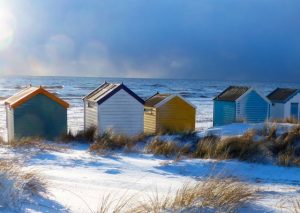The beautiful town of Lowestoft sits in the northernmost part of the Suffolk Coast. It is not only the most easterly town in the UK but also the first location on the north sea coast where the sun rises. Benjamin Britten, the renowned composer, was born here.
There are plenty of things to see and do in the town, which is popular with families, being home to two piers, a world-renowned theme park, a wildlife park, museums, and a busy theatre where the Royal Philharmonic Orchestra performs.
Ness Point, England’s regional centre of the renewable energy industry and the country’s most easterly point, is also found in the coastal town of Lowestoft, just a short walk from the main beaches. Lowestoft has long been a key port in the herring fishing industry, where 400 million herring were caught every year at the peak of the industry.
English composer, conductor, and pianist Benjamin Britten was born and raised in Lowestoft, and you can still see the house he was born in on Kirkley Cliff Road. On the other end of the musical spectrum, The Darkness, a famous rock band, formed in Lowestoft when its members met at Kirkley High school. Even ‘Friday Night’ mentions the school’s extracurricular activities.
In 1878, Joseph Conrad, one of Poland’s greatest authors, arrived in Lowestoft unable to speak a word of English. He was inspired to write The Heart of Darkness after meeting local sailors and learning English from them, who he described as ‘ruddy-faced, hardy men.’ Marlon Brando starred in the 1979 movie Apocalypse Now, based on the novel.
During summer, Lowestoft’s wide sandy beaches, promenades, and shoreline gardens are more attractive, as the town is located on the Broads National Park.
The Lowestoft museum reserves a variety of Lowestoft Porcelain pieces and information about the town’s heritage is located on Oulton Broad in Nicholas Everett Park. The north of the town’s Sparrow’s Nest Park houses a handful of small museums, including the Lowestoft War Memorial Museum, the Royal Naval Patrol Service Museum, and the Maritime Museum.
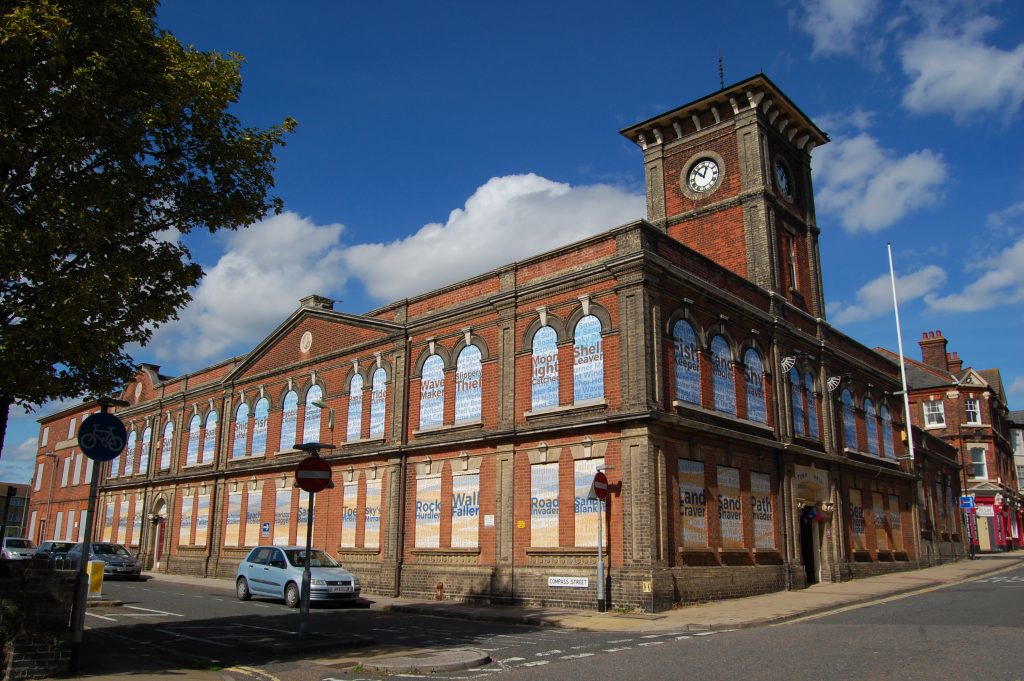
A Guide to Lowestoft
Lowestoft’s Beaches
There are some attractive Victorian houses along the promenade, gardens, and bowling greens, which delineate a long, flat sandy beach south of the Lowestoft harbour.
During July and August, the beach is overrun with sun-seeking families, and the Claremont Pier separates the lovely Lowestoft beach into two parts.
The South Pier, built in 1903, extends 200 metres into the North Sea and is currently awaiting redevelopment. On the promenade, you can dine at two vintage pavilions that have survived from the previous structure.
At the foot of the pier, there is a line of colourful beach huts. Starting south of the pier, the promenade climbs the cliff away from the shore. At the East Point Pavilion, you’ll find the toilets and changing areas.
Beachgoers can enjoy a variety of activities at both the Claremont pier and the South pier. The beach south of the Claremont pier has achieved blue flag status thanks to its environmental purity.
Sadly, Lowestoft’s tourism industry is not as strong as it was in the past. International travel has hugely impacted the economies of seaside towns that once relied on the tourism industry.
Nevertheless, Lowestoft’s beaches remain wonderfully maintained due to the dedication of locals.
Some seaside towns and nearby cities may suffer from a drop in East Anglia-based holiday interest, and all United Kingdom-based holiday interest for that matter, but locals still have excellent access to many beautiful locations. If you love the sea, Lowestoft is the ideal place to stay, and if you have ever visited Lowestoft, you’ll undoubtedly agree.
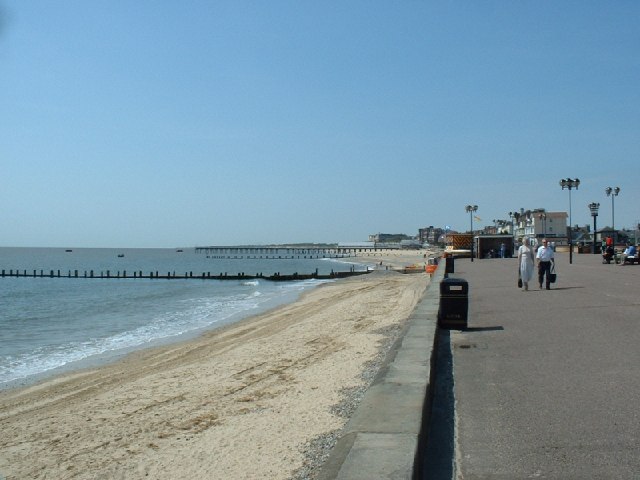
Lowestoft Maritime Museum
The Lowestoft Maritime Museum, the winner of several awards, is decorated with interesting artefacts covering a wide range of maritime subjects in Lowestoft in a small space.
RNLI and Royal Navy personnel received numerous medals, fishing paraphernalia, Lowestoft shipyard tools, ship models, and marine art pieces. These medals are all on display in this excellent Lowestoft museum.
The hovercraft’s inventor, Christopher Cockerell’s workshop, including his left-hand lathe, is especially interesting to visitors. Cockerell donated the workshop to the museum after his death in 1999.
Local individuals like a Victorian-era RNLI coxswain, Robert William Hook, who saved countless lives, and Thomas Crisp, a Lowestoft resident posthumously awarded a Victoria Cross for bravery in the First World War, can also be explored in depth.
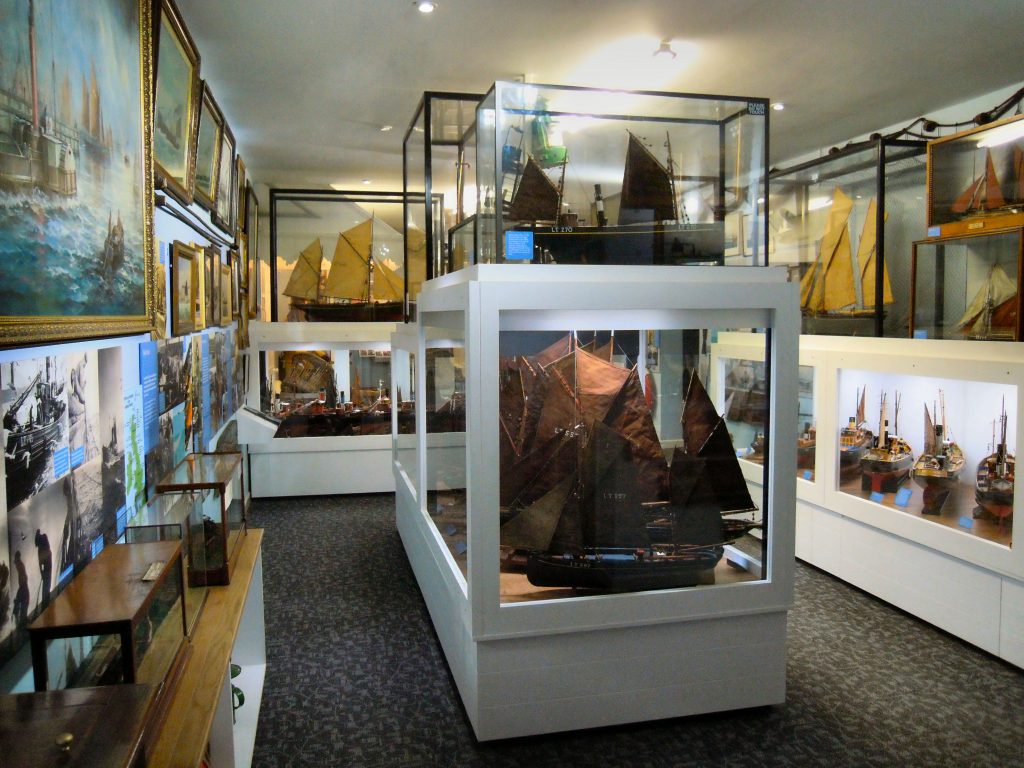
Somerleyton Hall
In 1843, this Jacobean country house was completely transformed, and its gardens were redesigned by a businessman who was a Peto fan. John Thomas, who was involved in the design of Buckingham Palace, was hired to design an Italianate Baroque Revival design.
Joseph Paxton designed beautiful glass and iron greenhouses that are set in the walled garden. You can also try to solve one of the UK’s best yew mazes, which was planted in 1846 outside the house. Although the house remains a private residence, you may take a tour to see the ballroom, parlour, grand staircase hall, library, and winter garden.
Family portraits, tapestries, and magnificent silver dining equipment adorn the wood panelling and 17th-century design in the interior.
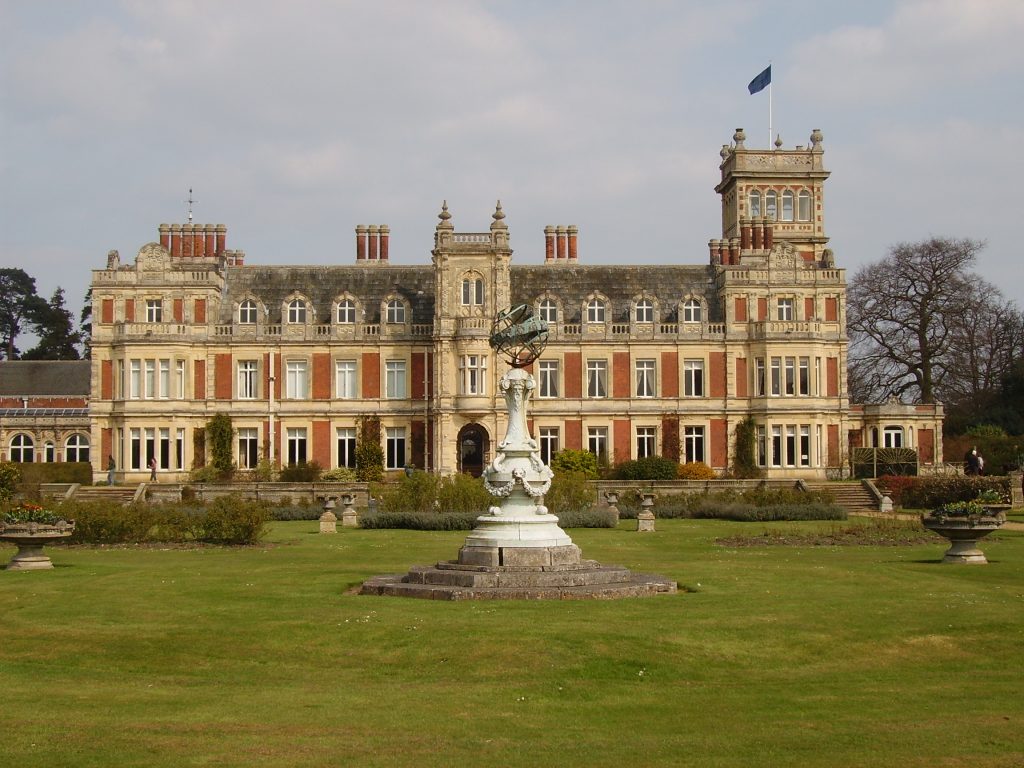
Kirkley
Kirkley is one of Lowestoft’s most active areas and the perfect place to spend a fun day with the family. It is where the stunning sandy beach, with two wonderful piers, Wellington Esplanade and Kensington Gardens, as well as a multitude of family attractions, cafes, independent shops, B&Bs, restaurants, and hotels all meet.
The magnificent structures facing the sea on Marine Parade, which house the birthplace of composer Benjamin Britten, are a legacy of national treasure and were commissioned by Sir Samuel Morton Peto. Kirkley conveys a real sense of character and history.
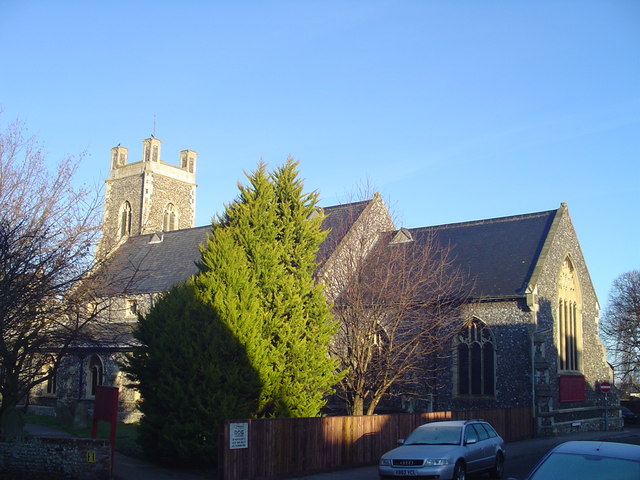
St. Margaret’s Church
Whether you are downtown or out in the countryside, you should be able to see the bright spire of this Grade I listed church.
For many centuries, vessels navigating the Suffolk coast relied on the church tower as a waymark. The church is constructed of flint and dates from the 15th century, with some later additions. Be on the lookout for the 14th-century octagonal baptismal font or the pre-Reformation brass lectern.
A tribute to all of the fisherman of Lowestoft who passed away at sea between 1896 and 1923 is displayed on the north wall of the nave.
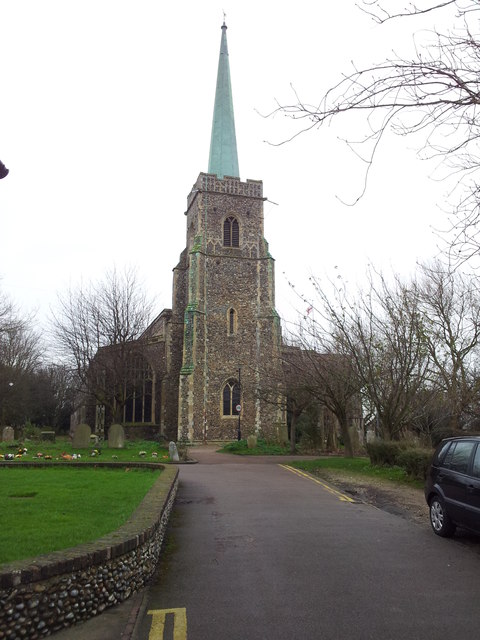
Mincarlo
An interesting relic of the fishing and shipbuilding industries of Lowestoft is berthed at the South Pier at the Mincarlo museum ship. The sindwinder trawler Mincarlo, built at Brook Marine yards in Lowestoft in 1960, is the last surviving vessel of the town’s fishing fleet.
Mincarlo caught plaice, sole, haddock, cod, and skate in the North Sea from the 1960s through the 70s, then functioned as a rescue ship for the southern North Sea natural gas fields platforms.
You can now take a tour of the Mincarlo to see the engine room, bridge, and living quarters. Scaling ladders will take you there. The volunteers are passionate and knowledgeable, and they provide an interesting first-hand account of life aboard trawlers.
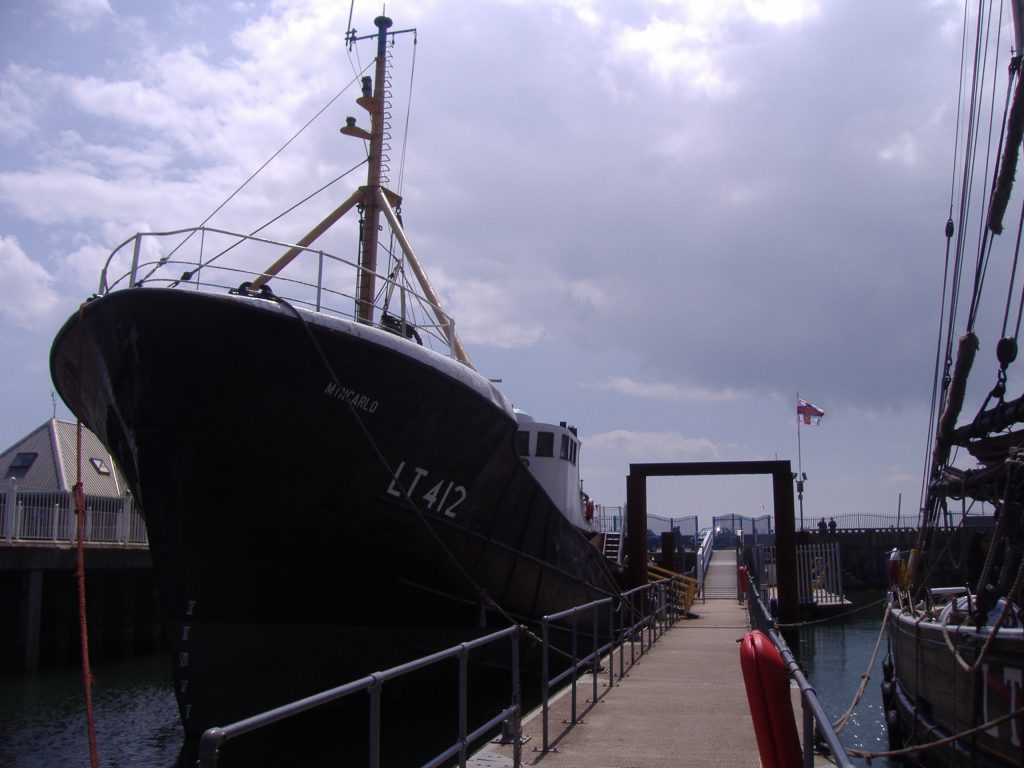
Marina Theatre
This non-profit theatre functions as the largest theatre in Suffolk, situated in the town centre of this beach village. Every year, the Marina Theatre engages in over 500 live screening and cinema events, as well as an education and outreach programme in which they work with thousands of people.
You’ll find something to suit your taste, whether it’s Steeleye Span or Jimmy Carr! From Jane Eyre to Dr John Cooper Clarke, they have it all! Their café and bar are fully licensed, they’re wheelchair accessible, and their hearing system is state-of-the-art.
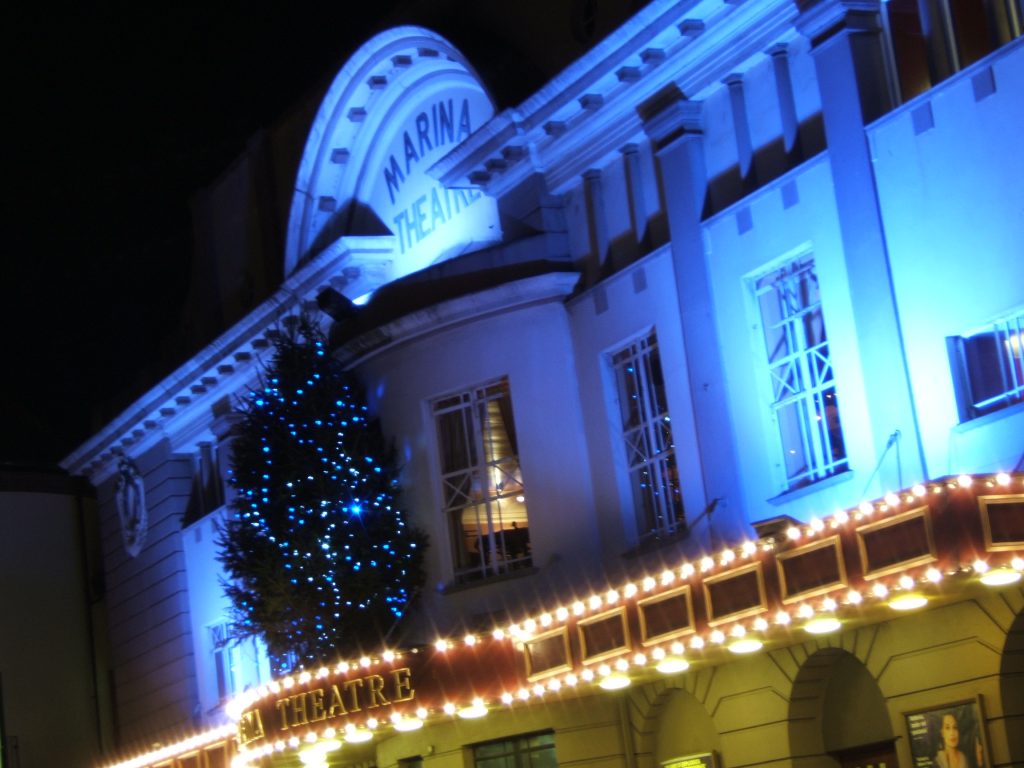
Town Centre Retail Sector
Marks & Spencer is a major retailer in the Waveney region. The town centre of Lowestoft is the hub for shopping in the area. Chadd’s independent department store was established in 1907 and acquired by the Great Yarmouth-based Palmers group in 2004, after more than 100 years in business on the High Street.
A specialist shopping district, called The Historic High Street, has been created on the northern edge of the centre and serves as the cornerstone of the town’s economy. North Quay Retail Park in Peto Way is one of several shopping malls that have appeared.
The town centre of this seaside resort, with its extensive wholesale and retail sector, is the perfect place to shop for some special souvenirs, decorative pieces, fashionable clothes, and just your simple household necessities.
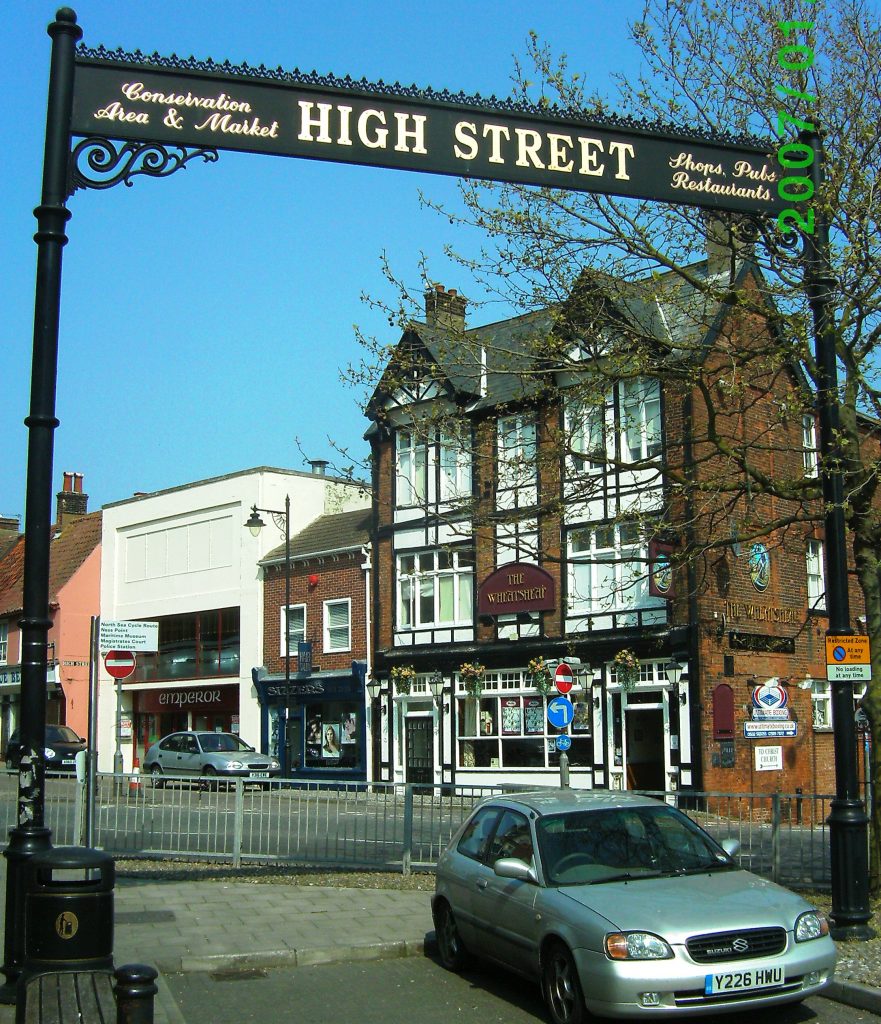
The Scores
A series of narrow lanes, the Scores connects the High Street and Whapload Road in Lowestoft’s harbour ward and descends to the sea.
Historically, Beach Village was positioned at the base of the cliff, and these paths were worn down by people traversing the slope for centuries as they headed in both directions.
There are 14 characters in all, but only 12 are visible today. As you stroll these streets, you may wonder about the kind of people who once roamed them, such as fishermen and bootleggers.
There is a Scores map available for download, as well as a Scores trail signposted. In September, the Waveney Athletics Club holds the Scores Race, a gruelling event that takes place on these stairs and slop
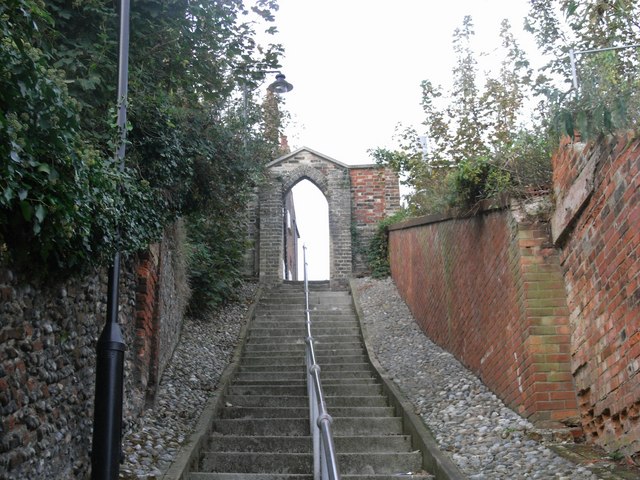
Nicholas Everitt Park
Nicholas Everitt Park is a peaceful open space on Oulton Broad, where a restful experience awaits you.
The late Victorian period witnessed the demise of Nicholas Everitt, who owned the land. Howard Hollingsworth, a philanthropist, purchased the estate and gave it to the town after Everitt’s death in 1908.
There’s a lot to keep kids amused in summer, including trampolines, a boating lake, and crazy golf, all at Everitt’s Broad House, home of the Lowestoft Museum.
There are picnic areas near the river, and the bandstand has live music on Sundays during summer.
Ness Point
This unnoticeable extension into the North Sea near the outer harbour is the most eastern point of the British Isles and the United Kingdom.
Standing here is the UK’s tallest wind turbine called Gulliver. It produced energy from 2005 to 2011 and is still standing. There is a “Euroscope” pavement at Ness Point, showing the direction and distance to European and British cities, as well as the sunrise during astronomical events such as equinoxes and solstices.
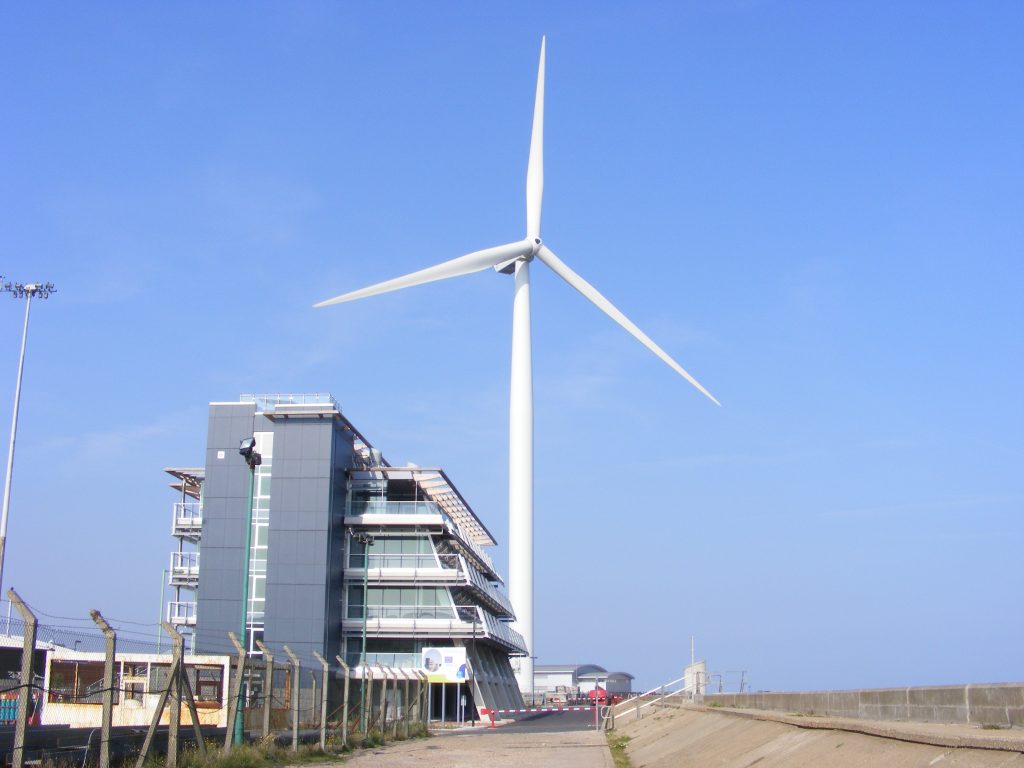
Town Hall
Town Hall, in the High Street, has been the site of various local governments since 1570, when Town House and Chapel were first established.
A meeting room and chapel were built in 1698 on the ground floor of the Town House, which incorporated a ‘corn cross.’ This structure was then replaced by the building currently standing and was designed in 1857 by J.L. Clemence. The structure contains the town clock and bell, which was cast in 1644 and rang each night at 8 pm.
Waveney District Council announced in 2012 that it wished to vacate the town hall and move to the premises of the Suffolk County Council on Riverside Road, which happened in 2015.
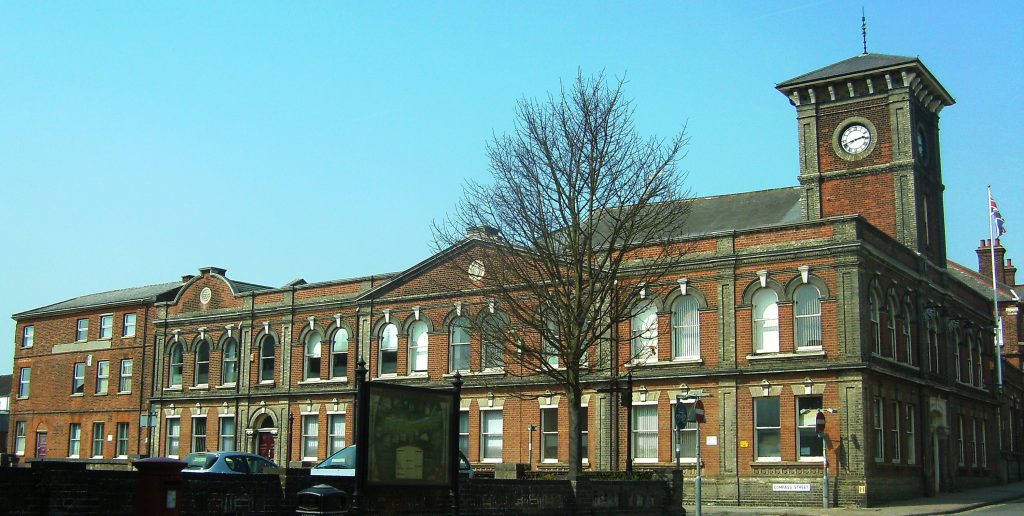
What’s your favourite thing about Lowestoft? Please send all comments and reviews to us at [email protected].
